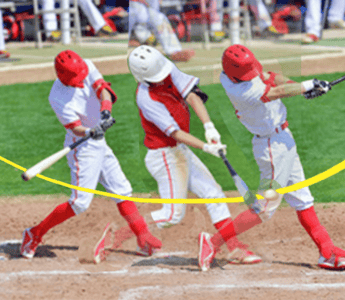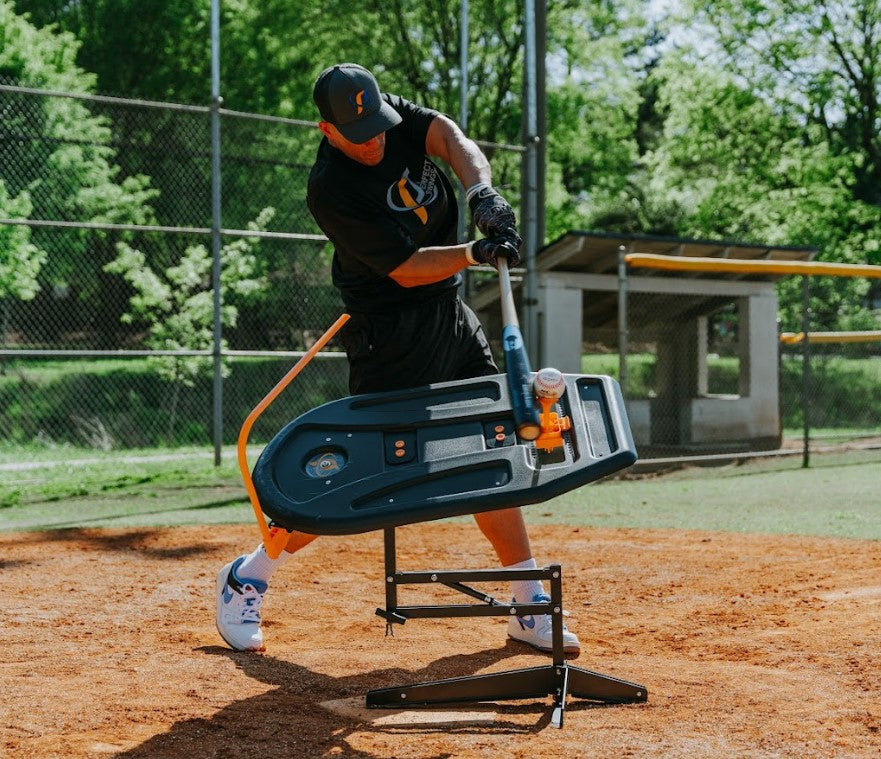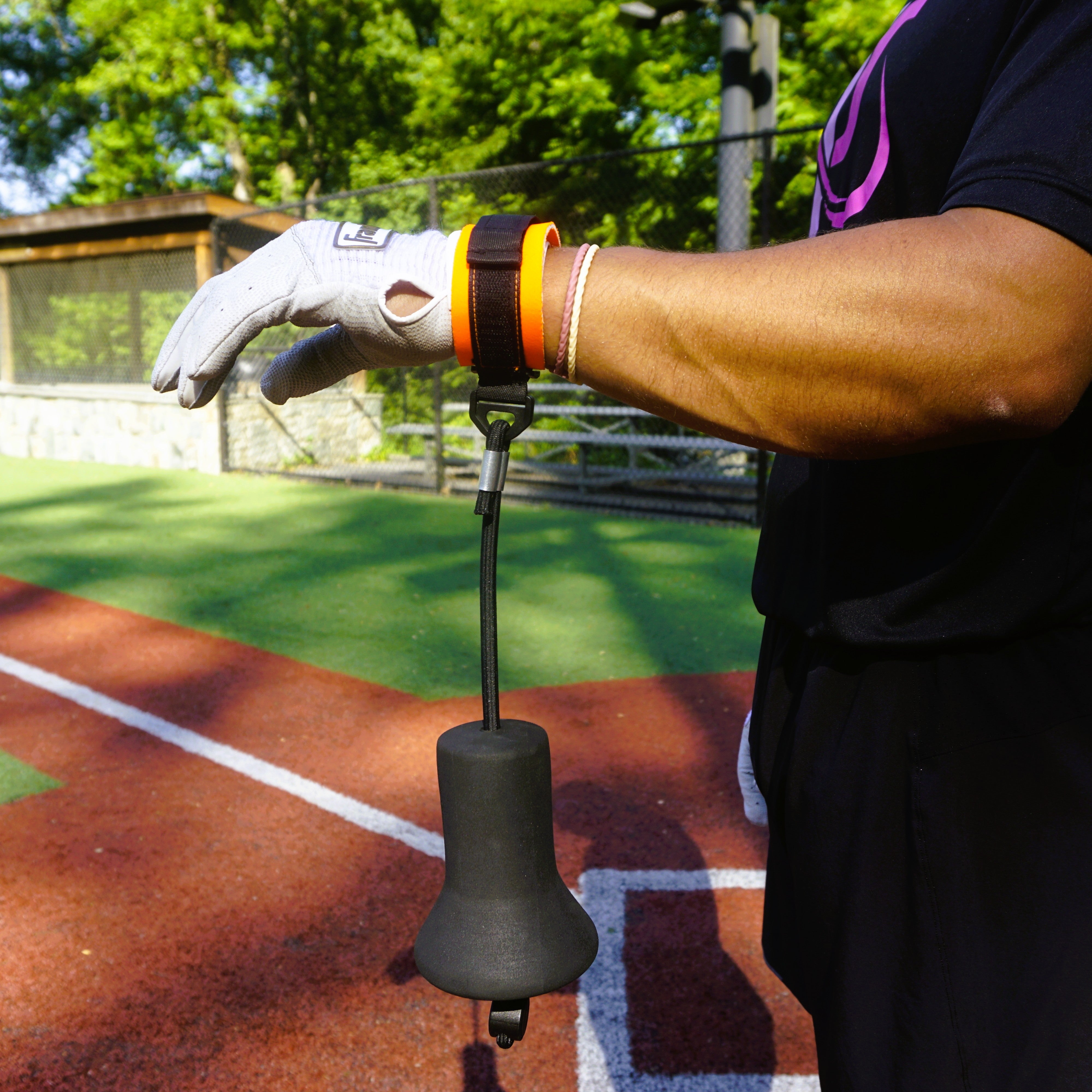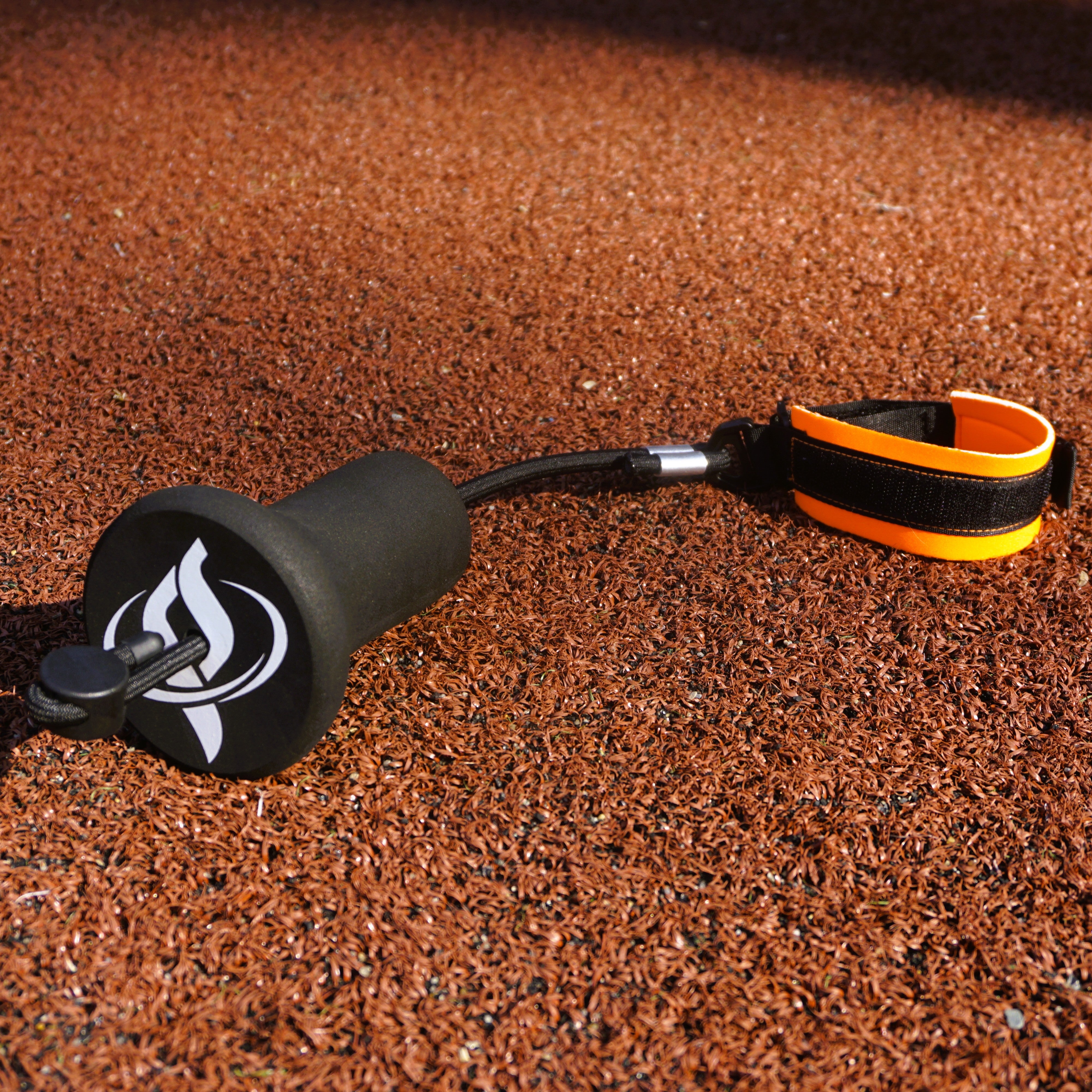What is Bat Speed?
Bat speed is defined as the speed at which the barrel of the bat reaches the ball when you make solid, hard, clean contact. It's one of the most critical factors in determining how successful you'll be as a hitter. Batters need to have a high bat speed if they want to hit for power because it allows them to put more force into their swings and keep up with fast-moving pitches more quickly.
So how do we measure bat speed? First, we don't use radar guns as baseball pitchers do. Instead, we use bat sensors that measure the speed of the sweet spot (in milliseconds)—the part where most of the energy transfer takes place—reaches impact after making contact with a pitched ball. This data gives us an idea of how much force is transferred through each swing.
Why is Bat Speed Important?
The mechanics of a baseball or softball swing determine how far the ball travels when hit. Having higher bat speeds increases your ability to hit hard. It is well-documented that the best hitters tend to have high exit velocities leading to better-batted ball statistics.
People who can swing their bats at a very high speed will be able to make contact with pitches more often than those who cannot. High bat speed is vital for hitting home runs and driving the ball deep into the outfield since it generates more power in your swing. From this, it is clear that the faster you can swing your arms, the greater distance you will put on each hit.
Lower Exit Velocity Metrics
Exit velocity is how fast the ball comes off of your bat. A lower exit velocity means slower hits; a higher exit velocity means more aggressive hits. Lower exit velocities mean more grounders than fly balls. The more grounders you hit, the less likely you are to hit a home run. Groundballs usually result in singles or doubles but rarely go for home runs.
The metrics for lower exit velocity include launch angle and exit velocity. A lower launch angle means that you're hitting more ground and fewer fly balls.
Higher Exit Velocity Metrics
Hitting the ball faster means you're hitting it more often. If you are getting on base more often, it will lead to more runs scored, and your team will win more games.
The metrics of higher exit velocity include launch angle and exit velocity. A higher launch angle means you're hitting more fly balls, which have a much higher chance of going for home runs than grounders. A higher exit velocity means that the ball was hit harder off the bat, leading to more hits and more runs scored by your team.
Increasing exit velocity can have profound benefits, including increased power, more hits, more runs, and less time for the defense to react to a hit.
Greater Distance
If you’re hitting with an increased exit velocity, then you will also hit the ball at greater distances. The speed of the bat swing correlates with how far the ball will travel. For every increase in 5 miles per hour of your bat speed, the ball will travel an additional 25 feet.
Putting this all together, increasing the speed of the bat swing means you will hit the ball with higher exit velocities, have more runs, and hit the ball farther.
What Creates Higher Exit Velocity?
Bat speed, bat grip, weight, and strength training affect your exit velocity and how fast a batter can swing.
Bat Speed
The faster a player moves the bat barrel through the hitting zone, the greater its exit velocity. You can increase bat speed without strength training by using a lighter bat, but if you want to get stronger, the answer is more complicated. You can increase bat speed with strength training, but it won't happen overnight—and it won't come from just one type of exercise or training program. It's important to remember that bat speed is only one part of a winning combination to achieve greater exit velocities and becoming a great hitter.
Drills that Increase Bat Speed:
Overload/underload training is a great way to increase bat speed. By overloading the muscles and then underloading them, you get stronger faster. The best way to do this is using free weights or resistance bands.
Other effective drills include plyometric, single-leg deadlifts, and biceps curl exercises.
Bat Weight
Bat weight significantly affects exit velocity because heavier bats have more inertia than lighter ones do--they take longer to accelerate and decelerate. A heavier bat will also tend to have a higher moment of inertia, which makes it harder to rotate at the point of impact. The best way to determine your ideal bat weight is by performing a series of tests with different bats and then measuring their exit velocities.
Overweight and Underweight Bats
Another important consideration is whether the bat is too heavy or too light. A heavier bat usually has a higher exit velocity, but it may also be harder to swing effectively. On the other hand, a more lightweight bat can be easier to swing but won't hit as hard as its heavier counterparts.
Does swinging a heavy bat increase bat speed?
Yes, it can. The heavier the bat, the more energy you can impart on a ball. However, this doesn't necessarily mean that you will have a higher exit velocity with an bat that is too heavy for your swing speed. Swinging an overload bat can reduce your ability to hit hard because of its increased moment of inertia.
Does swinging a lighter bat increase bat speed?
Yes, it can. The lighter a bat is, the easier it is to swing without feeling fatigued. However, switching to a more lightweight bat may also reduce your ability to hit hard because of its decreased moment of inertia. You want to find the sweet spot or barrel of the bat where it is light enough to swing quickly but heavy sufficient to produce a high exit velocity.
Strength Training
You can be strong without being fast, but if you want to be powerful enough to have the ability to hit the ball out of the park when you connect with it, then strength training is essential. To become more explosive, faster, and more potent in your swing, you need a solid strength training program that focuses on developing your core, legs, and forearms.
Strength training accomplishes three things that will help your baseball swing:
- It improves your body's ability to store and use energy efficiently.
- It increases the force you can apply when swinging a bat or ball in any direction.
- Strength training improves your balance and coordination so you can react quickly to incoming pitches.
Batters can improve their game by adding additional weight-training exercises for the upper body, such as swinging a bat underwater in both directions and submerging your hands into buckets of rice. These simple exercises will strengthen joint muscles.
Also, medicine ball workouts, jumping, and plyometrics all work great for being active to build up muscle.
How to Increase a Young Player's Bat Speed
- Strength training is essential for bat speed. The stronger the baseball player, the more powerful his swing.
- Plyometrics involve a rapid stretching of muscles followed by an explosive contraction. Plyometric exercises include squat jumps, box jumps, and clap push-ups.
- Flexibility training helps reduce injury risk by improving the range of motion in joints like ankles, knees, hips, and shoulders—all necessary to generate bat speed.
- Core training plays a vital role in increasing a baseball player's power output because it strengthens all major muscle groups that affect your swing: hips/quadriceps (front thigh), hamstrings (back thigh), gluteal muscles (buttocks), torso/spine support system including abdominal muscles which allow rotation between upper and lower body parts during a swing.
Criticisms of Bat Speed Training
Bat speed is essential, but other things make you a good player. Bat speed can indeed be developed through practice and technique, but there are limitations to how much you can improve your ability to swing significantly so if your body shape restricts your range of motion.
Many coaches will focus on improving their players' bat speeds without caring about other aspects of their game, like contact rate or plate coverage. This approach ignores the fact that any improvement in bat speed doesn't matter unless it translates into better performance at the plate.
Increase Your Bat Speed with Our Tempo Trainer!
The Tempo Trainer is a baseball training bat that teaches you how to load correctly with your hands, shoulders, and lower body. It provides physical feedback allowing the hitter to identify and fix incorrect body movements and timing.
FAQs
How does bat speed affect velocity?
Bat speed is the most critical factor in determining how fast you hit the ball. It's more important than your physical strength or muscular endurance. If you want to increase your bat speed, increase the force you generate with each swing.
Do training bats help increase bat speed?
Studies have shown that working with heavier and lighter-weighted bats can improve your bat speed. However, the results are less pronounced than when working with a regular bat with the same weight distribution. Because of this, training bats may be best used with traditional practice methods to increase your swing speed.
What is overload/underload training?
Overloading involves using heavier weights, while underloading means using lighter ones or performing exercises at higher speeds than average (making them so fast that they'll be challenging). For example: If a player wants to improve their swing speed but needs access to heavy bats during practice sessions, they could perform swings without actually swinging the bat - just mimicking the motion would show improvements.







